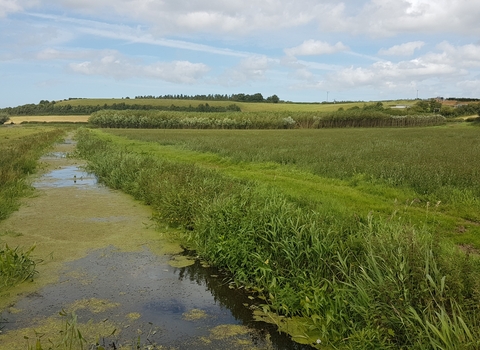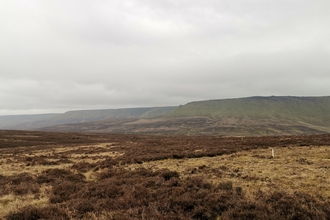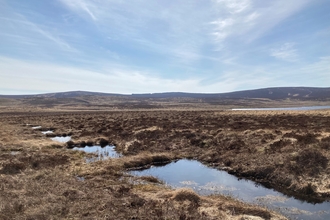
If you have an interest in restoring your damaged peatland then the Peatland Code may be for you.
Please use the below as an estimated timeline on how to use the Peatland Code from start to finish:
Step 1: Establish Eligibility
For a project to be eligible for validation/verification to the Peatland Code (at present) the following basic pre-requisites must be met:
- Peat soils must be greater than 30cm in depth for bogs with additional requirements, 45cm in fens
- Peatland type must be blanket, raised bog or fen
- Peatland condition must be 'Actively Eroding', 'Drained', ‘Modified bog’, ‘Cropland – drained’, ‘Grassland - intensive’ ‘Grassland - extensive’ or ‘Modified fen’ (See Field Protocol for definitions)
- Restoration activities must not include forestry removal
- Restoration must not be legally or contractually required
- Project must be able to enter a minimum contract of 30 years
- Restoration activities must not conflict with any other land management agreements
- Project must be additional i.e. it must require carbon finance to take place
- No new activity to drain and/or remove healthy peatland vegetation can have taken place on the land within the project area since November 2015
- These eligibility requirements are to be used as a quick indication of eligibility only. Full details can be found within the Peatland Code.
Step 2: Register the Project on the UK Land Carbon Registry
Registering your project with the Peatland Code is crucial for maintaining transparency and accountability. All projects are publicly accessible on the UK Land Carbon Registry, complying with international accreditation requirements.
It's important to note that projects cannot be registered retrospectively; in other words, work must not commence on the site before registration. Once registered, your project plan validation should be completed within three years.
If working with a project developer, they will likely register the project. Otherwise, see our Registering a project section of our website for further information.
For further information on the registry, please see our Peatland Code Registry, Registry Accounts and Registry Fees sections of our website.
- A project must be successfully registered on the UK Land Carbon Registry before restoration works can begin.
- Upload a draft Map and draft Bog Emissions Calculator or Fen Emission Calculator to the project registration.
Step 3: Project Plan Validation
To demonstrate compliance with the requirements of the Peatland Code, a number of actions and forms must be completed. Please see the Project and restoration validation section of our website for further information and templates.
Once registered on the UK Land Carbon Registry, you will be asked to select a validation and verification body once you have selected your chosen validator please then contact them directly to start the application process and recieve a quote as this is a paid for service.
Aim to submit all documents 4-6 months before restoration begins.
Projects may start restoration before Project Plan Validation is completed however this is a risk to the project. In this instance the risk of not achieving project plan validation is for the project and project plan validation should be achieved as soon as possible and before finishing the restoration. Project Plan Validation usually takes between 4-12 months after document submission to the validator.
- Upon successful project plan validation, Pending Issuance Units (PIUs) are listed on the registry if requested. Please only request PIUs at this stage if you are confident that the start date or project information is not likely to change at restoration validation.
Step 4: Peatland Restoration
- Restoration can take place over two years for one single Peatland Code project.
- If there are any delays to the project or extensions are required, please contact peatlandcode@iucn.org.uk.
- The ‘Start Date’ of the project is the date that the initial restoration is finished (capital works), i.e. when all diggers leave the site.
Step 5: Restoration Validation
Please see the Project plan and restoration validation webpage section of our website for further information.
- Validation must take place within one year of finishing the restoration activities.
- A site visit is required for this stage of validation.
- If Pending Issuance Units (PIUs) were not already issued at the project plan validation, then they are issued at this point. See registry fees for more information.
Step 6: Verification
Following successful validation and completion of the restoration activity a regular schedule of verification audits will be conducted by the validation/verification body. This will ensure the project achieves and maintains the expected condition category change, delivering the expected greenhouse gas benefit over its duration. Please see the Verification section of our website for further information.
- Projects should begin the verification process 12 months before the verification is due.
- The project must submit a Project Progress Report to the verification body.
- A site visit is required for every verification.
- First Verification takes place at year 5 of the project “Start date” and thereafter at least every 10 years.
- PIUs become Peatland Carbon Units PCUs in vintages of the first 5 years of the project and every 10 years thereafter.








